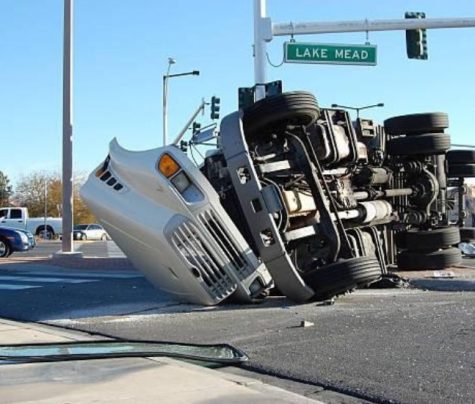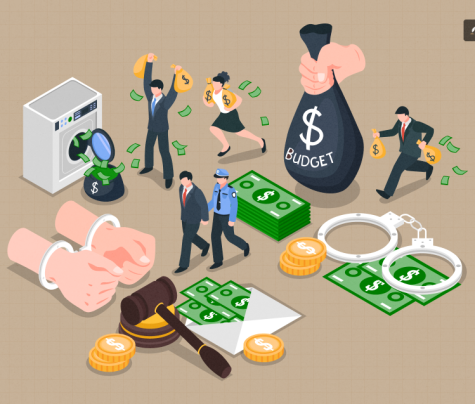
Someone who suffers an injury due to another party’s negligence can receive compensation through personal injury claims.
Damages are the most significant part of these claims. It is the monetary compensation that is awarded to a victim in order to restore his physical, mental, and financial loss.
To a person faced with the effects of a personal injury, understanding different types of damages they can recover is of utmost importance.
This is important in guiding a person to make choices, whether the person is faced with the loss of income or rising medical bills.
Hi. In today’s blog, I will be talking about the various types of personal injury damages that you might have to prove in court. So, if that is what you have been searching for, then keep on reading till the end, and thank me later…
How Does Personal Injury Compensation Work?
A claim for personal injury is designed to help you stand up again—financially, physically, and psychologically—after you were hurt through another person’s carelessness.
If this is presented to you, you deserve to require and make the responsible party pay for causing you injury. Their injury may come from the following:
- Car accidents
- Slip and fall incidents
- Defective products
- Medical malpractice
- Construction site accidents
Compensation begins with liability assessment. In this, the injured party should be able to establish that the defendant caused them harm directly. After assessment of liability, the level of damages is determined.
Although these settlements typically cover various damages, they are in many instances settled out of court and involve a few trials. For various cases, these damages may include the immediate medical expenses, future losses, and psychological effects.
After the settlement or verdict, the responsible party pays in a lump sum payment or through a structuring of settlements. Generally, it is the intent to return the victimized individual as best as possible to his or her pre-injury condition.
What Types of Personal Injury Damages Are Available in PI Cases?
Damages in personal injury law are what you’ve experienced because of your accident. These may be monetary loss, physical or emotional distress.
Suing for these damages not only allows you to recover, but it also causes the responsible party to pony up in a tangible, monetary form.
The following are the types of damages recoverable under personal injury law.
Economic Damages
Economic damages are often the biggest part of a personal injury claim. They cover real losses like medical bills and lost income—things that directly impact your life.
The goal is to help you get back to where you were before the accident. In personal injury cases, economic damages typically include the following:
- Medical bills
- Lost wages
- Loss of earning capacity
- Property damage
- Future medical costs
Bills, receipts, and pay stubs are used to calculate these costs more effectively. Since economic damages are based on actual financial losses, they are usually easier to prove and quantify. However, it is important to document all related expenses carefully to ensure fair compensation.
Non-Economic Damages
Non-economic damages compensate victims for the intangible losses they experience after a personal injury. They include those without a clear financial value that greatly impact the person’s quality of life.
These damages typically include:
- Pain and suffering
- Emotional distress
- Loss of enjoyment of life
- Disfigurement or scarring
As opposed to economic damages, non-economic damages are subjective and become difficult to quantify. All these factors involve severity of the injury, long-term ramifications, victim’s age, and lifestyle.
The victim’s testimony, mental health experts, and relatives may also corroborate a claim by establishing non-economic damages.
Although difficult to establish, such damages are essential to equitable compensation above medical expenses and lost income.
Punitive Damages
Punitive damages are a unique form of compensation in personal injury cases.
I’ve seen how, unlike typical damages meant to help victims recover, punitive damages are about something deeper—they aim to punish someone for deliberately harmful behavior, ensuring they never repeat it.
Unlike economic and non-economic damages, punitive damages in personal injury cases don’t reflect the victim’s losses.
Instead, they come into play when someone’s actions go beyond mere carelessness—cases where the wrongdoing crosses a serious line:
- Drunk driving accidents
- Gross medical malpractice
- Intentional assaults
- Hit-and-run incidents
- Defective products with known dangers
Courts usually demand convincing and cogent proof of willful neglect to enforce strict liability and order punitive damages.
Because these types of damages are meant to deter, they are important. But they are less frequently awarded and have statutory caps.
Factors That Affect Compensation in Personal Injury Cases
There are a number of factors that influence the award of compensation in personal injury cases, all of which assist in assessing the worth of a case.
Severity of injury is one such main factor. More serious types of injury, for example, permanent disability, incur higher compensation because their treatment is expensive and has long-term effects.
A further major consideration is the extent of monetary loss. These may vary from lost earnings, medical expenses, to loss of future capacity to earn. Proper documentation of such losses enhances the probability of success of the claim.
Non-monetary damages like pain and suffering can also have an enormous impact on compensation. Although more subjective and on a per-case basis, they play a gigantic role.
Liability is also included while determining damages for personal injuries. Where the victim is comparatively or contributory negligent, then the award will be less to him. Apart from that, coverage under insurance can limit the recoverable amount.
While not always considered, the quality of legal representation is equally important. If you’re living in this area, working with an experienced Raleigh personal injury lawyer increases your chances of getting fair compensation for your injury.
Challenges in Pursuing Personal Injury Compensation
It can be difficult to sue for reasonable damages in a personal injury matter.
The most difficult task could be establishing liability, particularly where there are several parties liable or the facts are contentious. In this case, the victims need to come up with conclusive evidence to support their case.
Another age-old problem is coping with insurance companies, who are usually determined to pay out as little as they can.
Insurers will usually negotiate by pretending to deny the extent of injuries or insisting on contributory fault in an attempt to lower the amount of payment.
It can be hard to come up with an equitable amount of settlement for non-economic damages sometimes, but since they are harder to put numbers on.
Lastly, poor legal representation will stop you from doing these things right and achieving the best result.
Wrapping It Up!
In conclusion, personal injury damages attempt to pay victims for physical, emotional, and monetary losses.
Economic damages repay the victims for quantifiable monetary losses, whereas non-economic damages remunerate for losses without a tangible monetary value.
Finally, punitive damages punish the negligent actors in extreme cases of negligence.
Read Also:
- 6 Key Concepts in Personal Injury Law
- What is the Reasonable Person Standard in Personal Injury Law?
- DUIs and the Domino Effect: Injury Claims That Follow Poor Decisions










0 Reply
No comments yet.